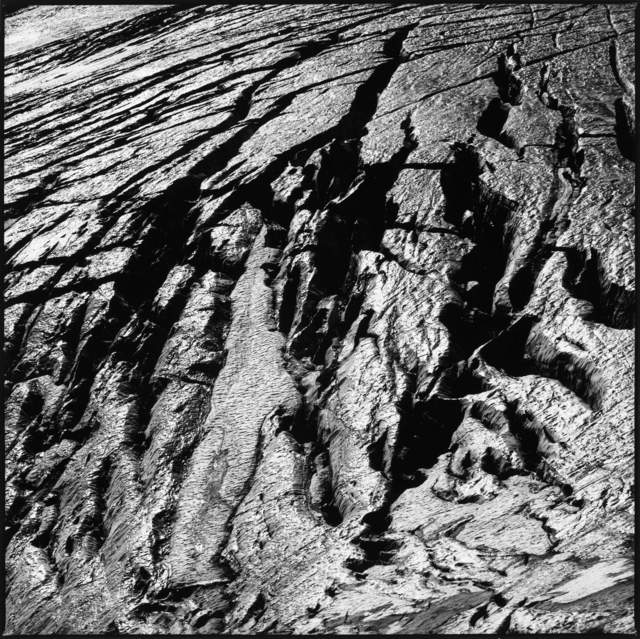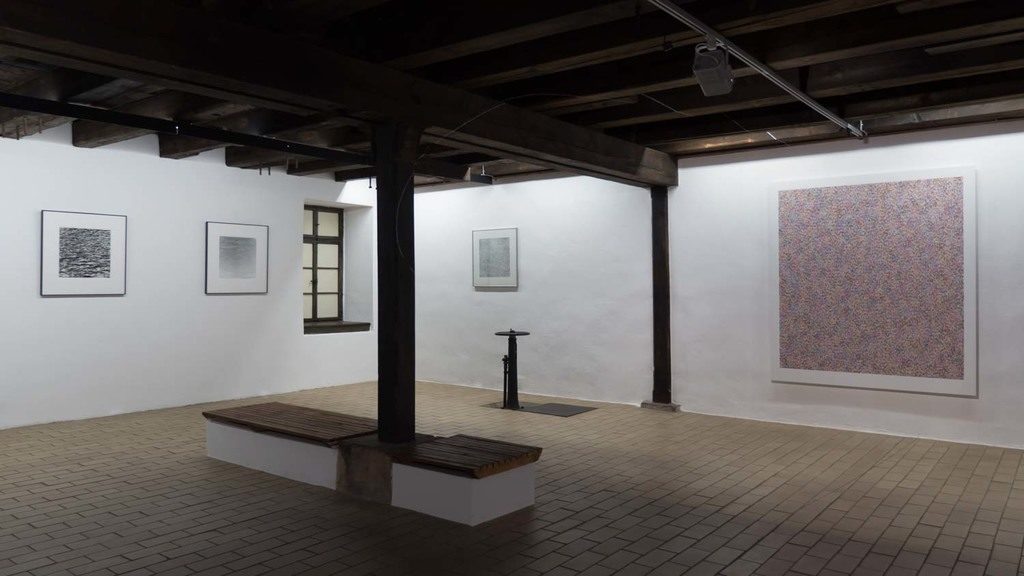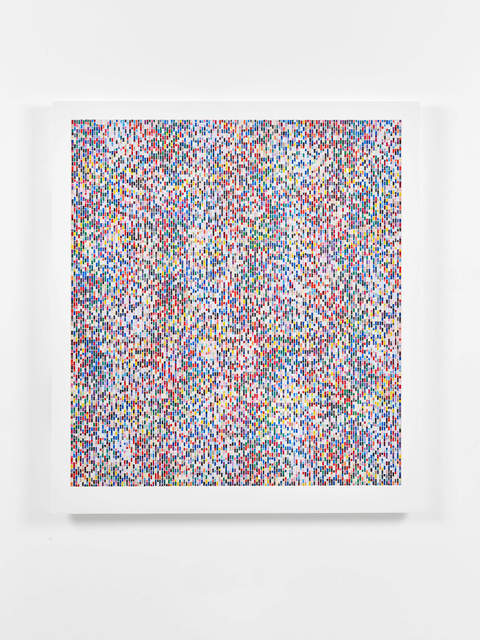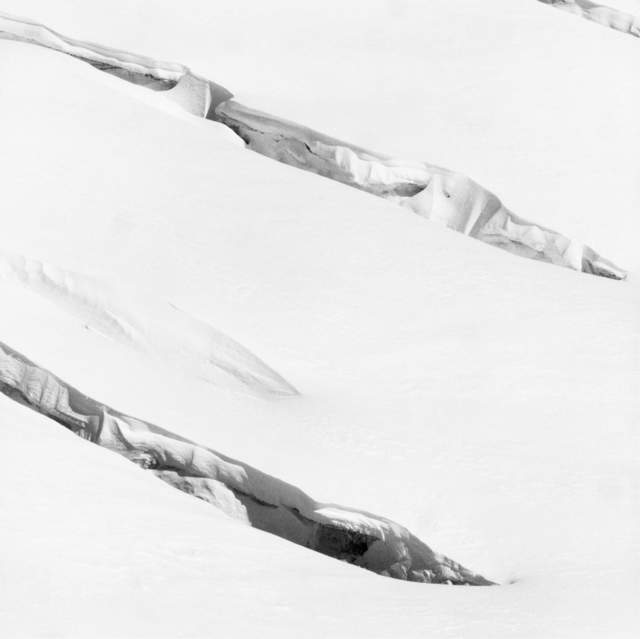This Two-Artist Gallery Exhibition in Germany Examines the Art of Seeing


Artnet Gallery Network

A walk through the two-artist exhibition “James Hugonin and Detlef Orlopp” at Friedberg’s Galerie Hoffmann is oddly akin to having your eyesight examined.
Two distinct but equally rigorous bodies of work hang interspersed in the former printing mill-turned-gallery space—one, a group of large, highly colorful canvases; the other, a series of black-and-white photographs. The paintings belong to James Hugonin, whose works, up close, reveal themselves to be gridlike compositions of closely toned dabs of color arranged in tight proximity. These are juxtaposed by Detlef Orlopp’s black-and-white photographs of the natural landscape, which, with their tight cropping and strong black and white hues, transform the surface of waves, icebergs, and the jagged earth into something strange and impactful.

Installation view of “James Hugonin and Detlef Orlopp,” 2019. Courtesy of Galerie Hoffman.
The exhibition is befitting of Galerie Hoffmann, whose programming centers on Constructivism, rooted in the belief that art can create new ways of seeing through its structure and, in doing so, help to build a better reality. This emphasis on visual logic and transparency is at the heart of the show. Hugonin carefully constructs his almost pixel-like paintings with dozens of distinct colors—it’s a project that’s reminiscent of Josef Albers or Orphism at the turn of the last century, which saw music and color as entwined forms of logic. He shows viewers how colors create rhythm between one another. Meanwhile, Detlef Orlopp’s photography is of the old school variety: film printed on a small scale. And while his photographs are ostensibly of landscapes, what they are really about is the reduction and construction of an image to reveal the shape of the world.

James Hugonin, Elliptical Variant IV (2016). Courtesy of Galerie Hoffman.
“[An artist] who establishes rules allows the observer the possibility to understand the basics, the logic of a construction in a logical way, through that education of rules suddenly allows for the capability of surprise—so they can see when the artist is being disobedient and allows freedom for fantasy,” said Adelheid Hoffmann, the gallery’s director.

Detlef Orlopp, 21.09.2017, Ohne titel (2017). Courtesy of Galerie Hoffman.
This precise attunement to perception—to small differences of tones and light—make the disparate works seem part of a shared project. Or, to extend the eye examination metaphor further, one might say that with Orlopp’s images, shapes come into clarity through a lens, whereas Hugonin tests the acuity of our color perception. Together, they give viewers a heightened awareness of the wondrous experience of seeing that we might otherwise take for granted.
“James Hugonin and Detlef Orlopp” is on view at Galerie Hoffmann through November 17, 2019.